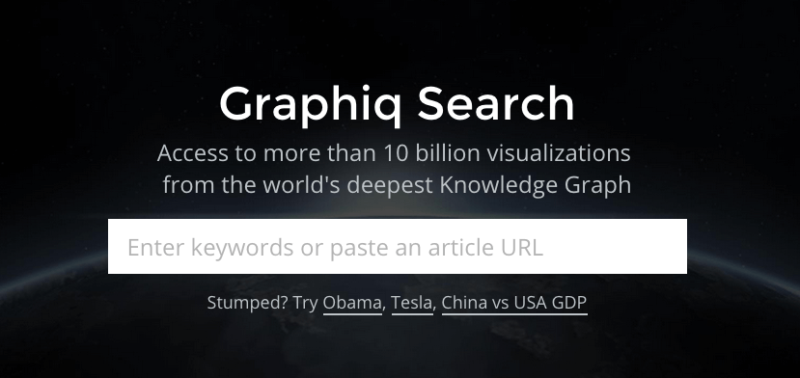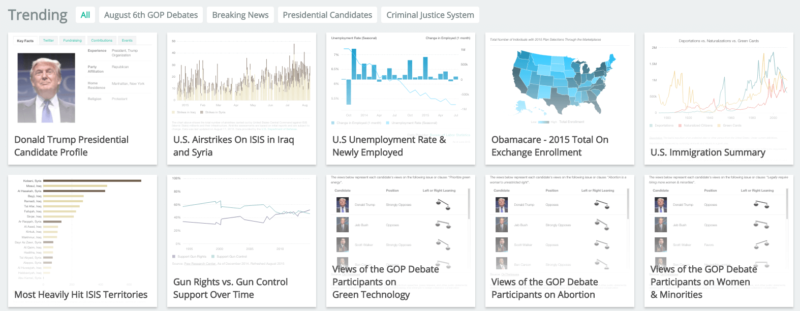Graphiq Search: FindTheBest Becomes Knowledge Graph Engine
The world’s most extensive “knowledge graph” may not be at Google. Vertical search site FindTheBest (FTB) has rebranded and relaunched as Graphiq, a data visualization or knowledge graph search engine. Using a huge volume of data sources, automation and human editorial oversight, the company says that it has created “the world’s deepest and most interconnected Knowledge Graph, featuring 1,000 collections, 1 […]

The world’s most extensive “knowledge graph” may not be at Google. Vertical search site FindTheBest (FTB) has rebranded and relaunched as Graphiq, a data visualization or knowledge graph search engine.
Using a huge volume of data sources, automation and human editorial oversight, the company says that it has created “the world’s deepest and most interconnected Knowledge Graph, featuring 1,000 collections, 1 billion entities, 120 billion attributes, and 25 billion curated relationships.”
Founder Kevin O’Conner told me that FTB’s experience creating roughly 18 distinct search verticals loaded with structured data was the foundation for the new site. There’s considerable sophistication behind the scenes, enabling the new site to dynamically generate 10 billion data visualizations.
Here are a few examples:
While it’s difficult to determine, Graphiq may offer the widest selection of structured data (and associated visualizations) anywhere online. The data and graphics range from international GDP comparisons to healthcare stats to the historical popularity of US baby names and well beyond.
FTB’s original vertical search sites are not being promoted, but they can still be found in general search results. For example, people will still be able to use and search for houses on the company’s real estate vertical (FindTheHome), look up credit card rates on its financial site (Credio) or do research on colleges and universities (StartClass). Indeed, many of the Graphiq visualizations click through to these underlying vertical comparison sites.
While the FTB vertical engines are consumer-facing, Graphiq is positioned very differently and is directed mainly toward journalists, researchers, publishers and enterprises. However, this is merely one business model expression of the underlying data model.
Publishers can use Graphiq’s charts as content, and journalists can sign up for alerts and research or embed graphics in their stories. In this sense, Graphiq is not that far removed from Nate Silver’s FiveThirtyEight.com.
Graphiq says it has done enterprise integrations with AOL/The Huffington Post, MSN, Hearst and several other large publishers. There are also WordPress plugins and custom integrations.
In these enterprise integrations, Graphiq will generate or recommend data and charts for stories based on an automated analysis of content. For example, the system might suggest a visualization like the above about a story written on Obamacare enrollment. Beyond this, users can simply search or browse the data in a more conventional way.
FindTheBest began as an effort to improve upon Google and provide structured comparison information and “answers not links.” It had terrific data but struggled to generate consumer awareness and create a brand. This shift (or expansion, as the company explains it) offers a more comprehensive enterprise-facing tool that offers immediate and obvious value. But there are many other interesting ways the underlying technology and data could be used.
Contributing authors are invited to create content for Search Engine Land and are chosen for their expertise and contribution to the search community. Our contributors work under the oversight of the editorial staff and contributions are checked for quality and relevance to our readers. The opinions they express are their own.
Related stories
New on Search Engine Land

